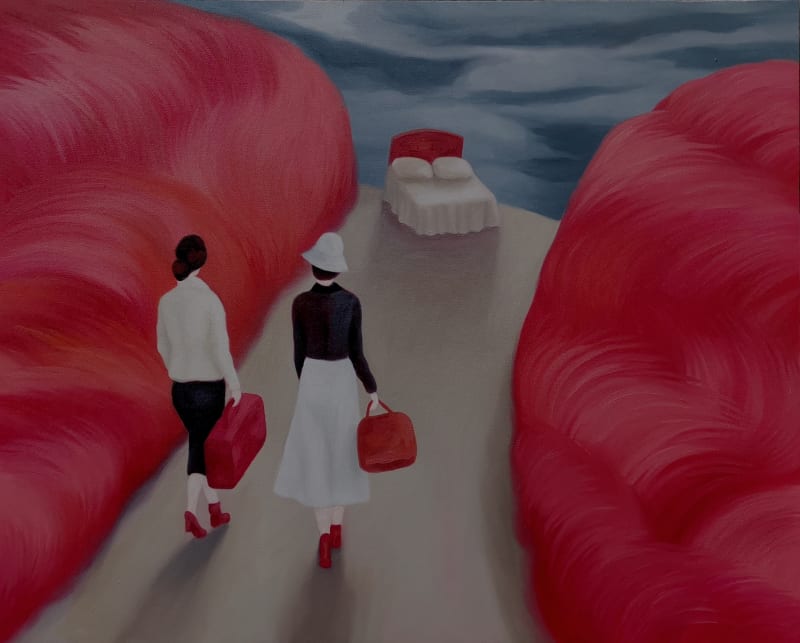BAGGAGE REVOLUTION
Mijan Jumalon’s latest series of works form a multiptych, an entire landscape of forked pathways pushing their way through a crimson prairie. The environment and its residents approximate an almost Boschian performance with its subjects enacting a melancholy gathering. There is a scattering of figures in owl masks (a Bosch motif) that lends an occultic feel to these paintings. There is, however, no narrational structure formed nor themes of moral struggle. The environment is not a garden of earthly delight but rather a realm where everyone is waiting for something to end or something to begin.
The artist’s subjects in this sense seem more like Chaucer’s pilgrims resting in various stages of their journey. Much like The Canterbury Tales feature dissimilar stories, Mijan’s process is gathering individual figures before composing them as a whole scene. This arranging of disparate pieces and coaxing an ordered tableau out of them is one of the main drives of her current work.
By portraying the interactions (or lack thereof) between these varied and seemingly stranded travelers, the artist tells a tale of waiting and waning. The exhibit name prods us and casts us further into this landscape of limbo as each work’s title solidifies the notion of purgatorial locales.
Her characters are literally and figuratively at a crossroad, this sense of stillness amplified—as in the works Terminal and Hometown—by populating her space with numerous figures, each frozen in place and keeping distance from one another. Through it all surrounds surreal foliage that evoke a veld of veins and capillaries more than grass, suggesting an internal state of mind rather than a mere external backdrop.
Though everyone is biding their time in this fantastical setting, one does not get the sense that they are entrapped nor abandoned. They are paralyzed but purposeful, dissolving into the landscape as they watch and wait. It is a stillness borne out of necessity, akin to children on a playground after school waiting for their parents.
Our eyes do settle on the stasis exaggerated by the balance of compositional elements to create lonely figures in a bare landscape, yet our mind conjures a way out. What lies beyond the branching paths? What is obscured by the high grass ahead? Optimism ultimately wins out. And as we dream of exits, we are sure that sooner or later Mijan’s pilgrims will come into motion and resume their journey.

